Wildflowers of Hua Hill in early Autumn
May 25, 2020 17:39 · 2417 words · 5 minute read
It’s late autumn now in New Zealand, which reminds me of autumn and things back home.
This article was translated from a diary of my previous botany teacher, professor Jinhu Wang. Professor Wang not only has a profounding knowledge of plant taxonomy and ecology, but also brings with him the traditional Chinese philosophy (Naturalism) to the current relationship between human and nature.
Author: Jinhu Wang (Sophora)
Translator: Renji
Source: https://user.qzone.qq.com/862331437/2
September
The Hua Hill in September is still lush green and the vegetated exterior is still a continuation of summer, but the fallen leaves and fruit of the oak trees on the birdwalk announce the arrival of fall. The sound of acorns falling to the ground can be clearly heard as you walk along the birdwalk or sit on the roadside rocks and rest for a while. As long as it’s not a holiday, Hua Hill is very secluded.
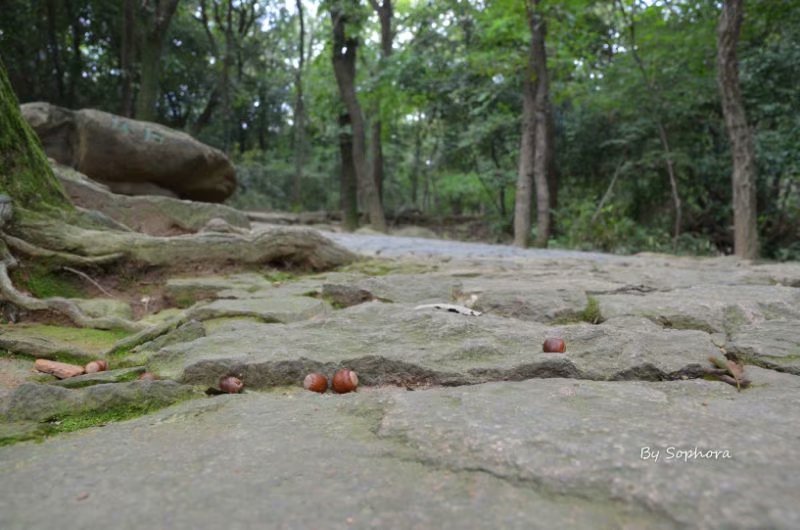 Birdwalk and nuts
Birdwalk and nuts
There are several legumes among the wildflowers in early autumn. Among them, the Japanese Lespedeza (日本胡枝子) flowered as early as July and is still in bloom. Now, Lespedeza virgata and Lespedeza inschanica are also in flower. They are mainly distributed on the top of the mountain near the Lotus Peak. In Japan, the plants of the genus Lespedeza are named after “Hagi”(萩), and they are considered to be representative plants of autumn. It seems that in the south of the Yangtze River, Lespedeza species can also be used as a representative plant in autumn.
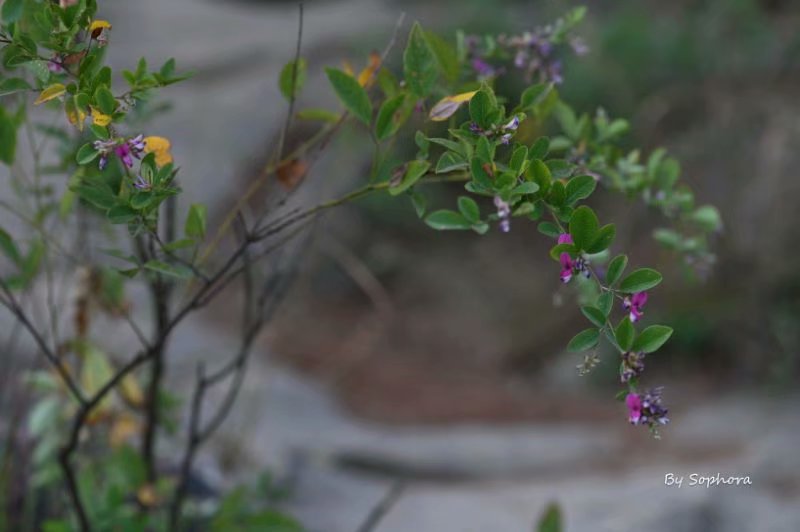 Japanese Lespedeza
Japanese Lespedeza
Lespedeza virgata (细梗胡枝子) is a small shrub that appears to be a fine herb, but is more branched and scattered. Each leaf is composed of three leaflets that are also very small. The slender inflorescence rachis protrudes from the leaf axils, often with three small flowers at the upper end. The flowers are predominantly white, but the uppermost and largest petals (flag petals) are fuchsia in color, this fuchsia seems to be a pigment dotted on rice paper and spreads up one side into a halo. The overall look of the Lespedeza virgata is sparse, and lightly elegant.
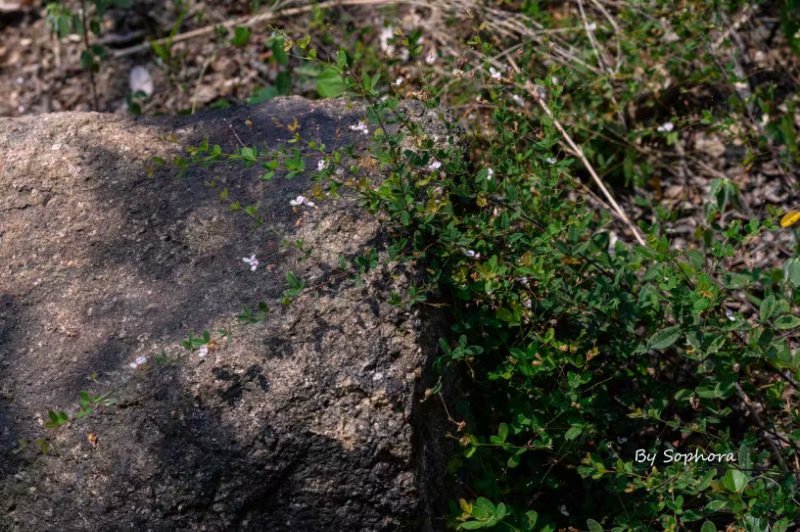 Lespedeza virgata
Lespedeza virgata
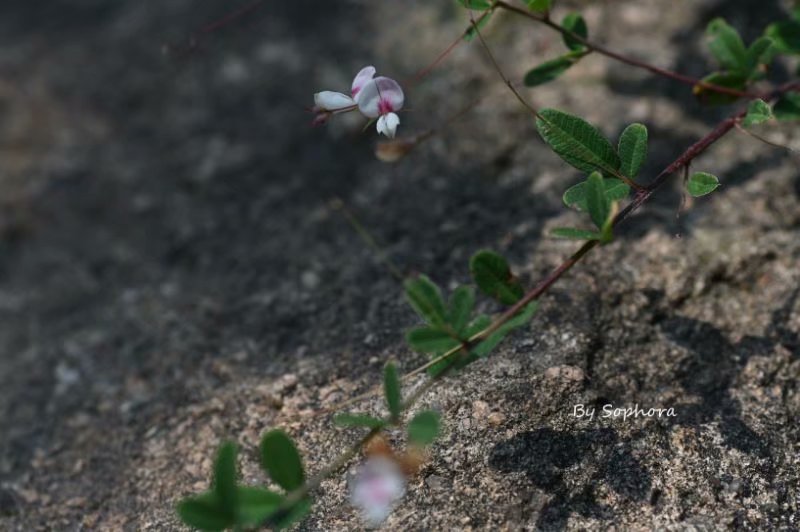 Lespedeza virgata
Lespedeza virgata
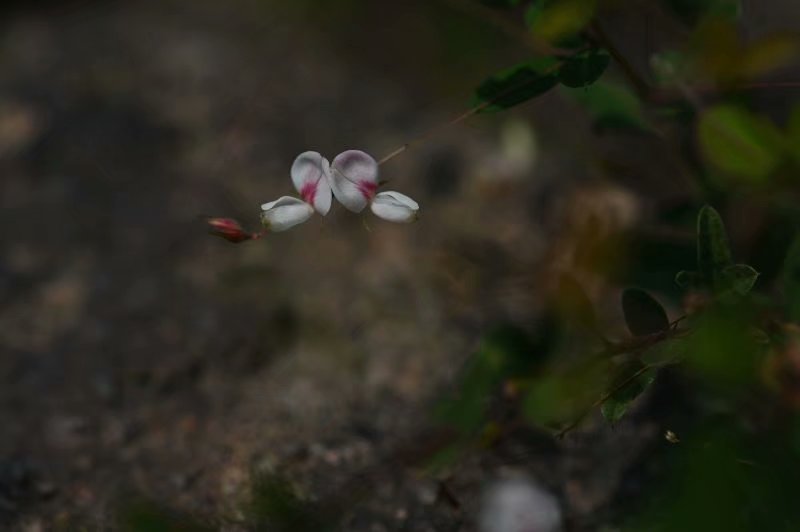 Lespedeza virgata
Lespedeza virgata
Lespedeza inschanica (阴山胡枝子), a densely branched small shrub, is stouter than Lespedeza virgata, and its three compound leaves are larger than those of Lespedeza virgata. The inflorescence rachis of Lespedeza virgata is relatively short, so the flowers are crowded densely in the leaf axils. The flowers are also predominantly white, with a purple spot at the base of the flag petal. Flag petals are the size of fingernails, hence this plant is also called “white henna”.
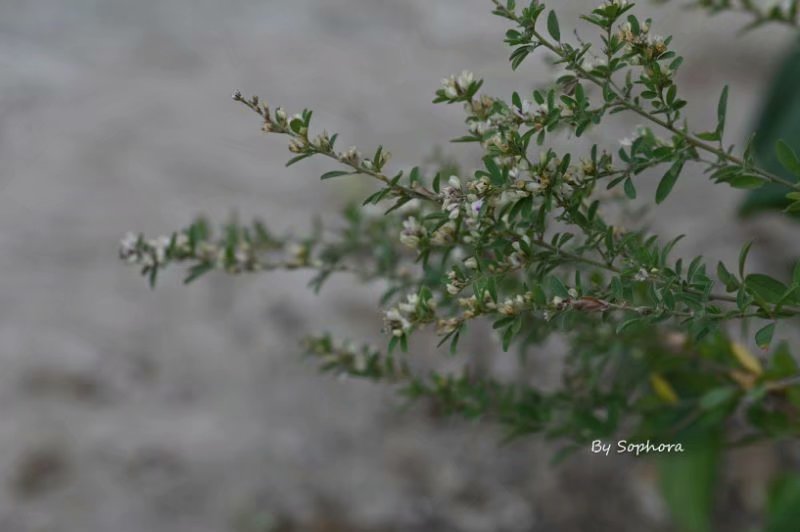 Lespedeza inschanica
Lespedeza inschanica
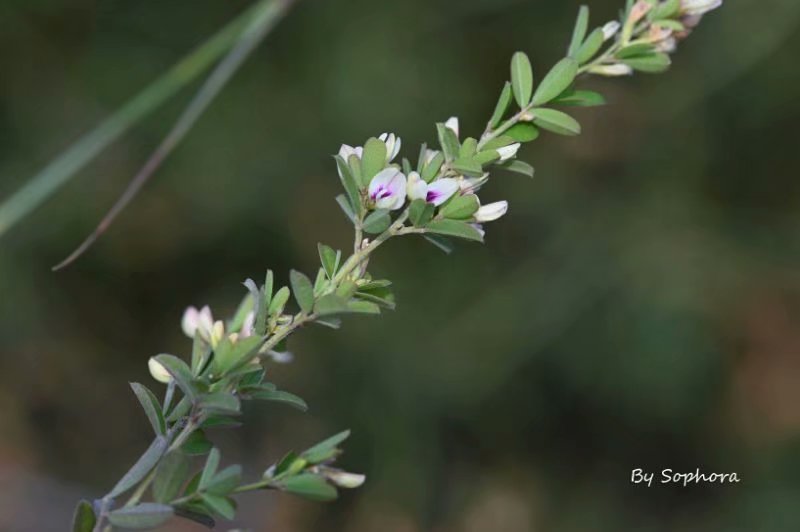 Lespedeza inschanica
Lespedeza inschanica
Campylotropis macrocarpa (杭子梢) is also in the Fabaceae family and, like Lespedeza, has three compound leaves with only one seed in the pod fruit. Campylotropis macrocarpa is found in the area around Lotus Peak in Hua Hill and along the mountain paths where there is more sunlight, and is more common than both Lespedeza virgata and Lespedeza inschanica. It is taller than the two kinds of Lespedeza and is a multi-branched shrub that can grow up to 2 meters. Campylotropis macrocarpa are heavily flowered, and the fuchsia flowers often gather into a sparse ball that hangs from the branches and sways in the wind. Each of its small flowers has a long stalk with a joint at the end of the stalk where it joins the flower, which is the point of difference between the genus Campylotropis and the genus Lespedeza. The pods of the fruit are from the original flowering branch, which is the head of the fruit, which is probably where the Chinese name “the tip of a pond” comes from. The “杭”(wooden character) of “杭子梢” can be written into “笐”(bamboo character); either way, it is pronounced “háng”. Campylotropis macrocarpa have a long flowering period, blooming in August and its full bloom in September. With its colorful flowers, large amount of flowers and long flowering period, Campylotropis macrocarpa should be one of the most beautiful wildflowers in early autumn.
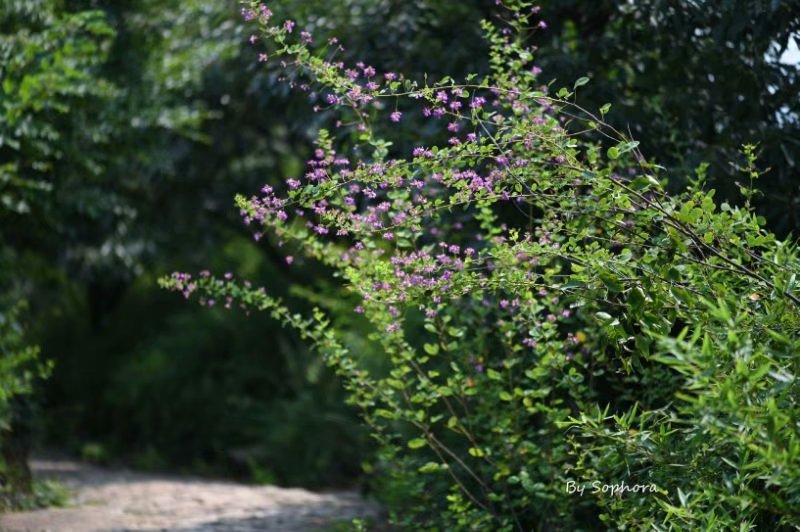 Campylotropis macrocarpa
Campylotropis macrocarpa
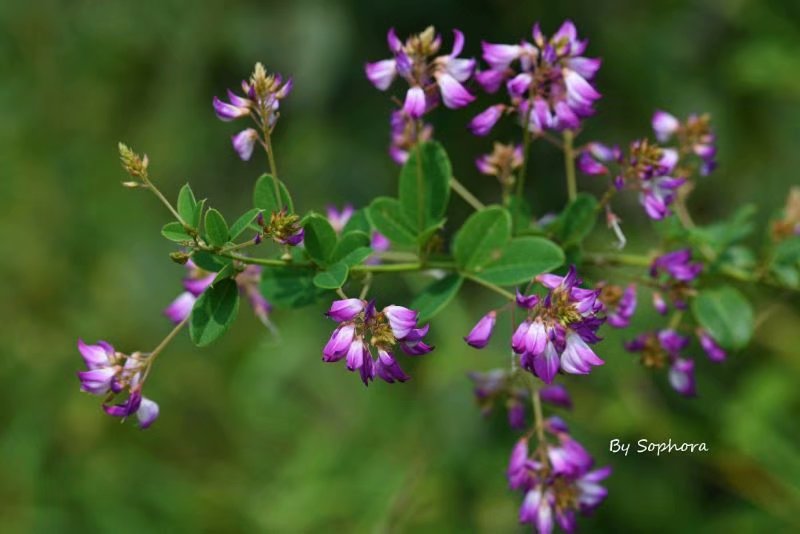 Campylotropis macrocarpa
Campylotropis macrocarpa
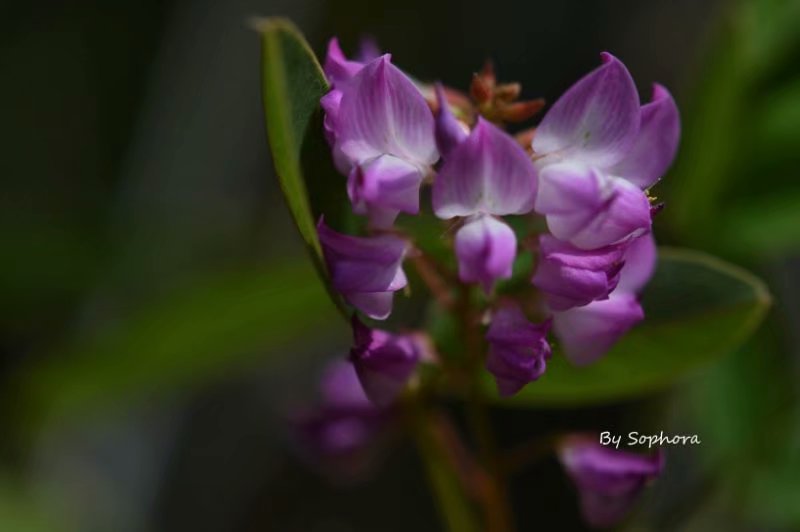 Campylotropis macrocarpa
Campylotropis macrocarpa
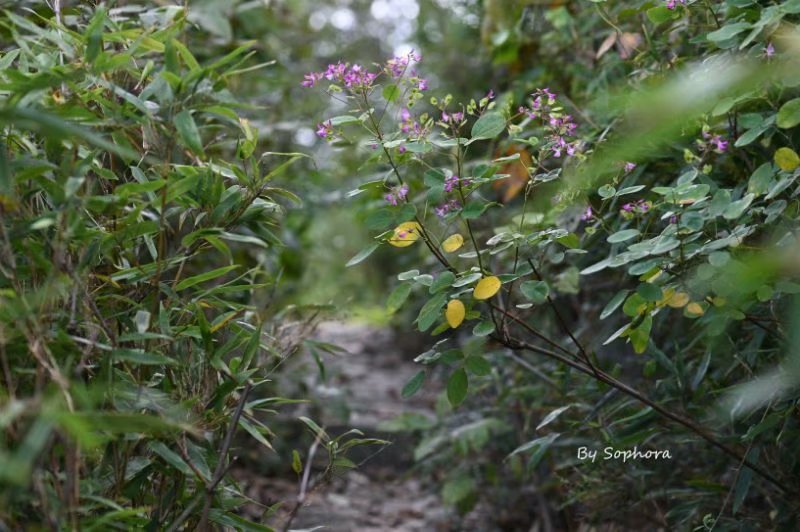 Campylotropis macrocarpa
Campylotropis macrocarpa
Indigofera pseudotinctoria (马棘) is also a legume, but its leaves are not triple compound, but rather pinnately compound with as many as 7 to 11 leaflets, and the pod fruit is cylindrical, with multiple seeds inside. Indigofera pseudotinctoria is also a shrub, up to 3 m tall, with purple florets densely knotted in an inflorescence. Indigofera pseudotinctoria is a taller shrub that flowers in late summer to early fall; Indigofera tinctoria (华木木蓝) is a dwarf clumping shrub that flowers in mid-spring.
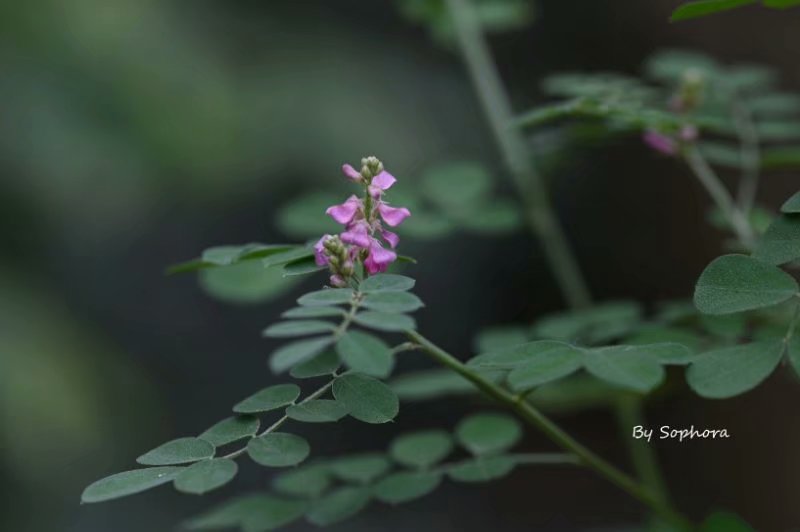 Indigofera pseudotinctoria
Indigofera pseudotinctoria
There is also a legume that is also blooming called Kummerowia striata (鸡眼草chickeye grass). Kummerowia striata is a small grass that grows on the ground. It can be seen on some lawns in the city in addition to the mountains. However, due to the regular mowing of the lawn, Kummerowia striata growing on it rarely blooms. If you want to see the cornflower flowers, you would better go to the mountains. Kummerowia striata has been flowering since August. One or two small purple flowers grow in the axils of the leaves and are not very noticeable, but its leaves are somewhat interesting! Their leaves are three compound leaves, and the small leaves have dense and clear “V” shaped lateral veins. Pinch the small leaves with your nails, the fracture always follows the lateral veins, and is “V” shaped and not flat, so it is also known as “pinch not aligned” (掐不齐). When children, even the most childlike adults, learn about this feature, they will personally pick a leaf and pinch it, try it, play with it.
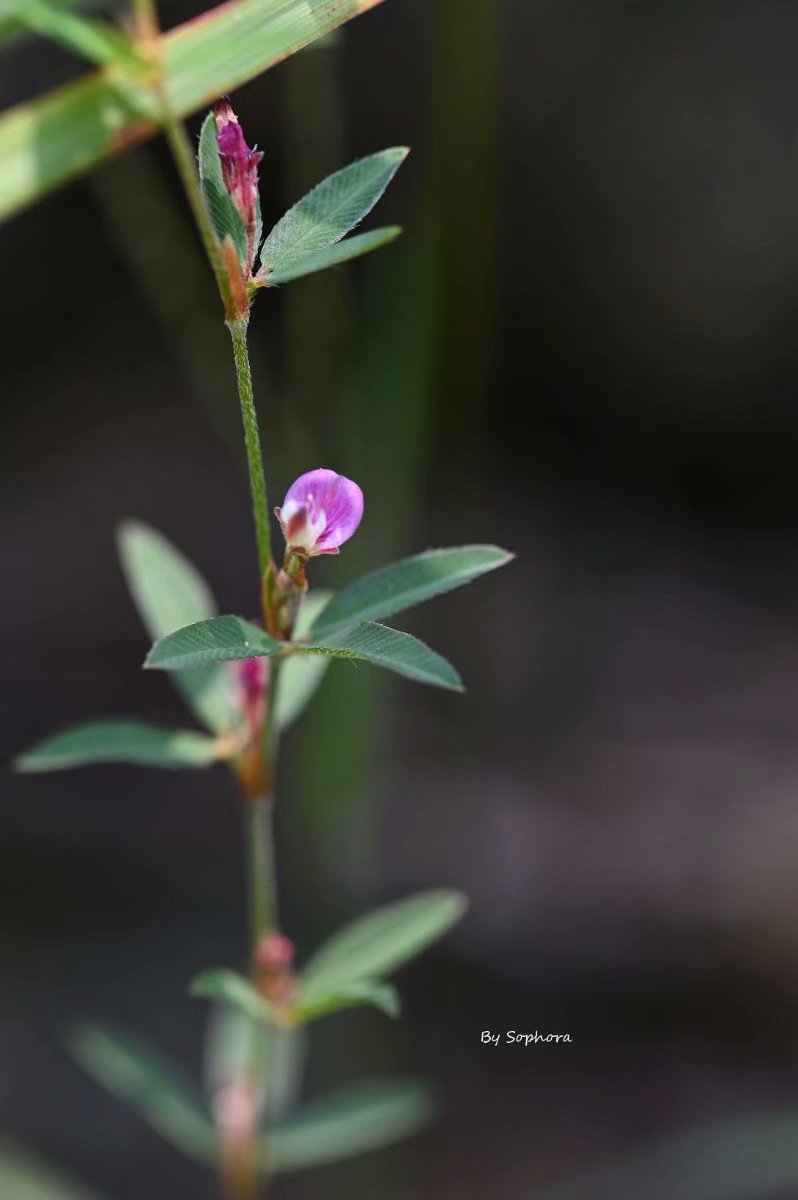 Kummerowia striata
Kummerowia striata
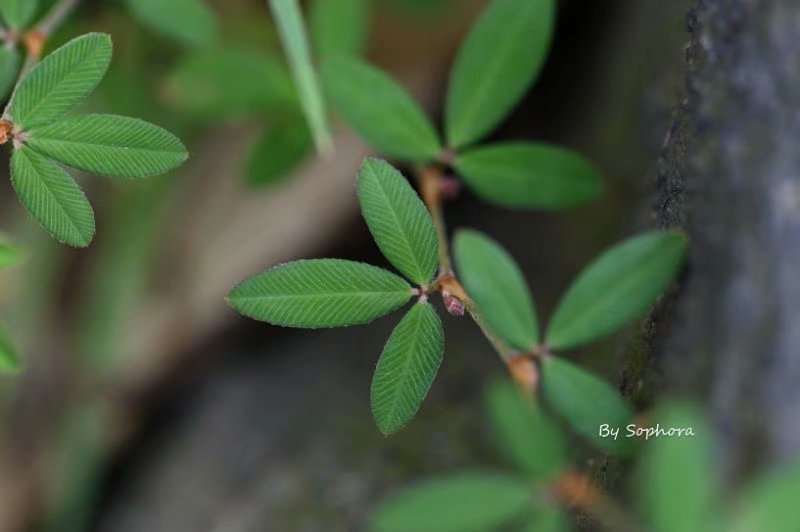 Kummerowia striata
Kummerowia striata
There are two species in the genus Kummerowia, another called Kummerowia stipulacea (长萼鸡眼草), which is distributed throughout the country, but is not seen in Hua Hill. The two can be distinguished by the white hairs on the branches and the shape of the leaves, Kummerowia striata with inverted hairs on the branches and the widest part of the small leaves not at the upper end, Kummerowia stipulacea in reverse.
There can be more than one Chinese plant species name, and there is no unified and clear agreement on which one should be chosen, but in most cases, we feel that the preferred name from 《Flora of China》 is more formal. For example, 鸡眼草 and 掐不齐 can refer to the same plant, both names can be used, it’s just that the former is preferred in the botanical journal, so it’s better to call it chickweed in most cases. But only one of the scientific names of each plant is correct, and although there may be other names, they can only be treated as synonyms. The scientific name of a plant species is common throughout the world, named in Latin, and the body contains two words, the first being the name of the genus in which the species is located, and the second being a species name. For example, the scientific name of 鸡眼草 is Kummerowia striata, where the species name “striata” means striated, meaning that the leaves of this species have clear stripes (leaf veins). The meaning of an species name may be a characteristic of the species, the name of origin of the specimen (type) on which it is named, the name of a person in honour of that person, and other aspects.
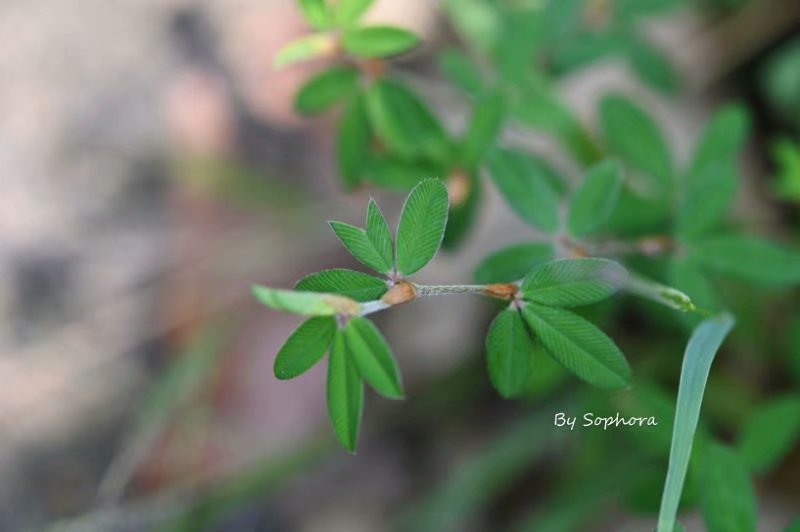 Kummerowia striata
Kummerowia striata
Mosla soochowensis (苏州荠苎) is a plant of the genus Mosla in the family Lamiaceae, which is flowering at this time. Its type is taken from Suzhou, where the species-additive “soochowensis” in the scientific name Mosla soochowensis means Suzhou city. Among the seed plants, the plant named after Suzhou is currently only one.
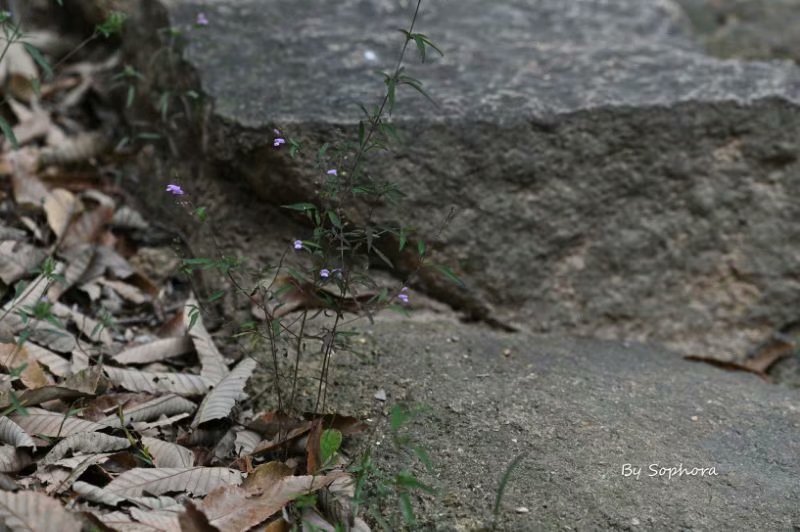 Mosla soochowensis
Mosla soochowensis
As a member of Lamiaceae, Mosla soochowensis is also characterized by square-stemmed, paired leaves and labial flowers. Its leaves are much smaller and more linear than those of Mosla grosseserrata. The small blue flowers of Mosla soochowensis grow node by node with distinct spacing between the two nodes, and the inflorescence is sparse and distinct. The slender flowers are paired with slender leaves, and the wild grasses such as Mosla soochowensis sway in the autumn breeze, which is lovable.
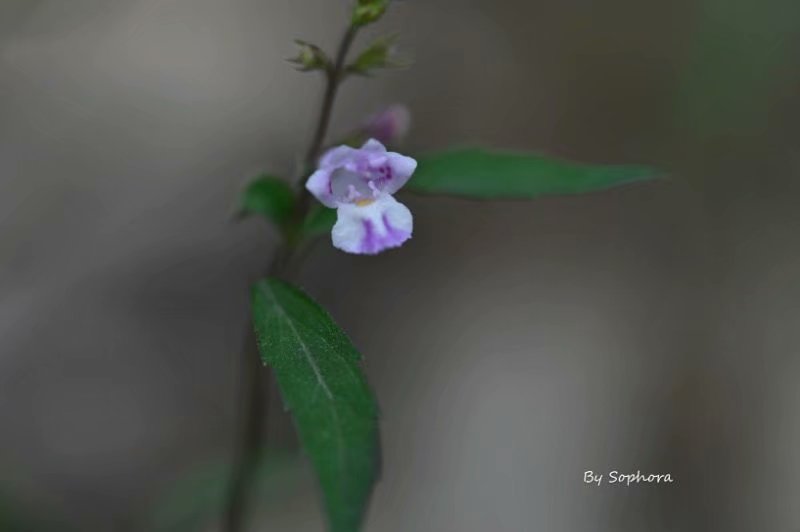 Mosla soochowensis
Mosla soochowensis
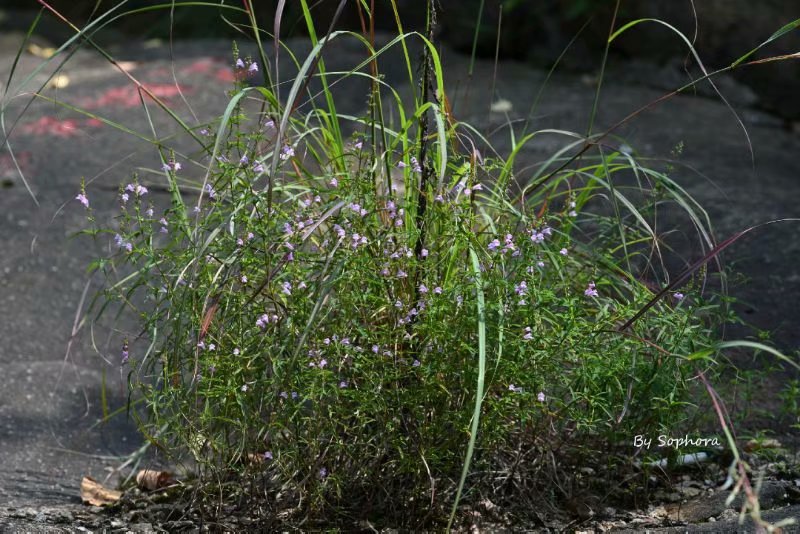 Mosla soochowensis
Mosla soochowensis
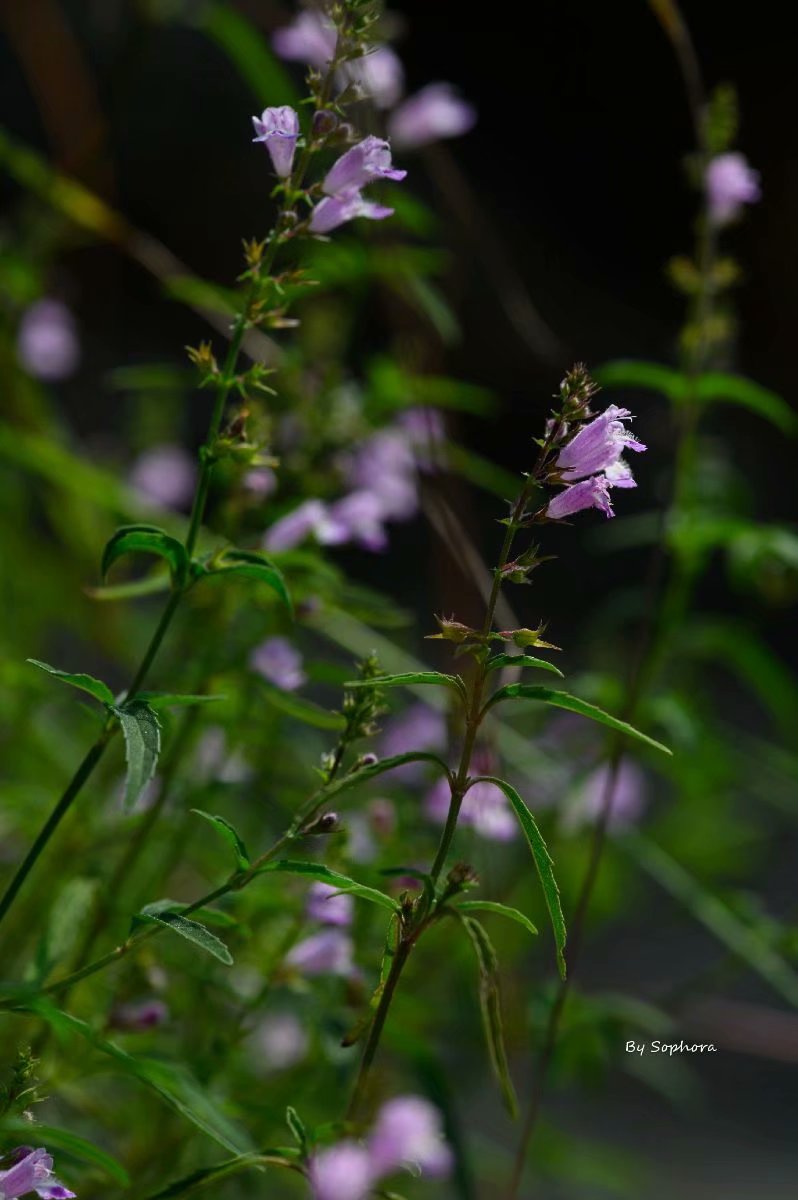 Mosla soochowensis
Mosla soochowensis
If you are bored with flowers in blues and purples, let us look at a golden one. Corchoropsis crenata (田麻) is a kind of small grass. There are small pieces on the top of Hua Hill and beside the Finger Pavilion. The golden flowers are very beautiful. Its stalk is long, the flowers pendulous, five golden petals, and five spatulate staminodes (anthers) long and conspicuous, while the fifteen developed stamens are short and condensed inside, the central one being a pistil, which is densely covered with white hairs, and the fruit still bearing dense white hairs. The stem bark of Corchoropsis crenata has well-developed fibers, which can be used to make ropes and sacks, so it has the word “hemp” in its name. It is just such a small herb. How much does it take to weave it into a sack? So, I don’t think anyone would cultivate it as hemp.
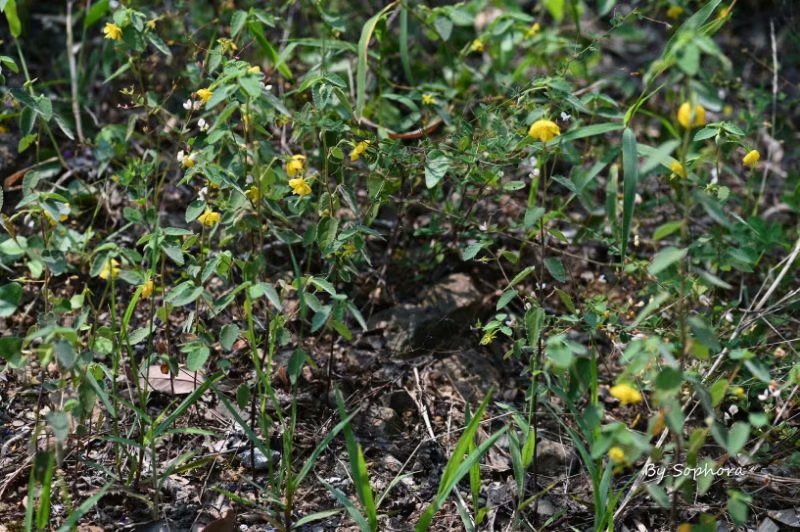 Corchoropsis crenata
Corchoropsis crenata
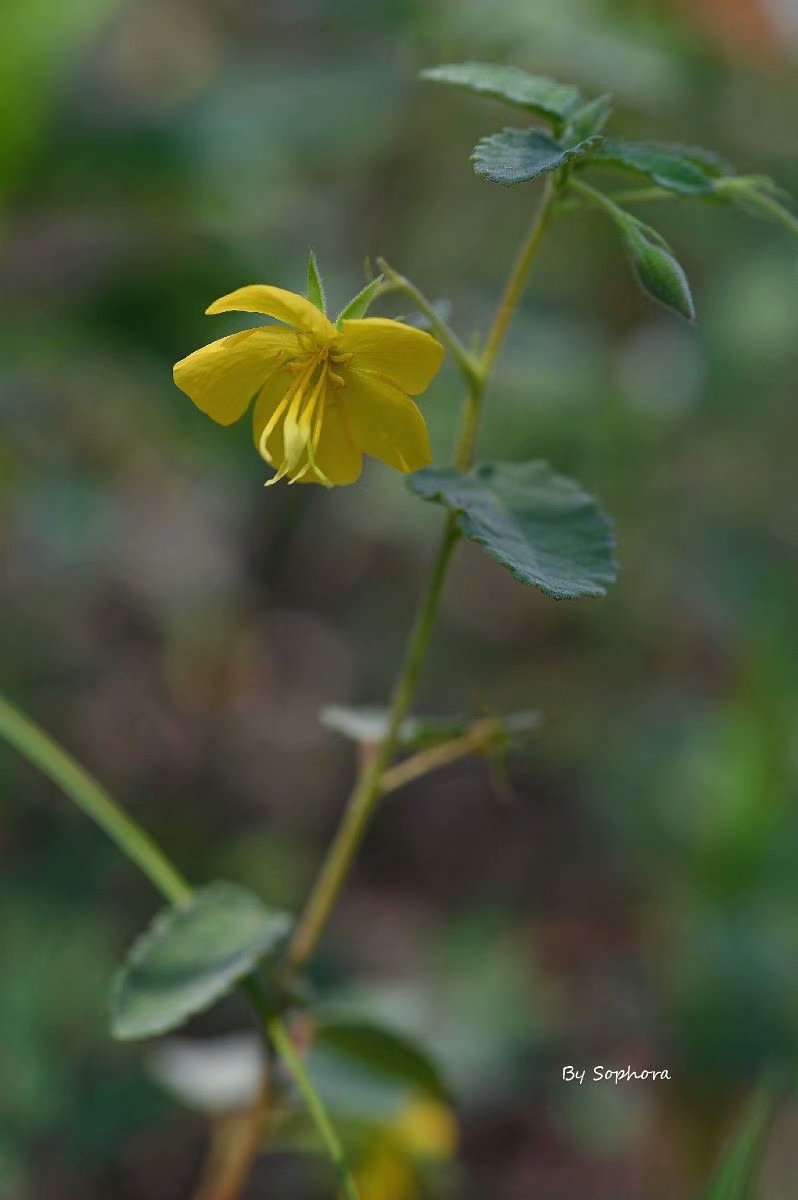 Corchoropsis crenata/span>
Corchoropsis crenata/span>
The representative plant of early autumn cannot be said without Lycoris radiata (石蒜stone garlic). On the hilltop outside Cuiyan Temple on Hua Hill, many Lycoris radiata bathed the hilltop in red. Such a spectacle will never leave one indifferent. In the “Compendium of Materia Medica”, it is said that “Lycoris radiata which is found everywhere in the lower wetlands, is known as black garlic in ancient times, and is commonly known as crows garlic, a branch of arrow is also. The early spring leaves, such as those of garlic seedlings and mountain mushrooms, have sword ridges on their backs and are scattered all over the ground. In July, the seedlings were withered, and a stem like an arrow shaft, about a foot long, was drawn from the flat ground. Stem ends flower four or five, about 60% in red, Lilium-like and long petals, yellow stamens long-whiskered. Its rhizomes are garlic-like, its skin purple-red and its flesh white. It is a little poisonous, and the “Salvation of the Wild Materia Medica” says that it can be frying cooked water and drenched in food, thereby it can save lifes during starvation period. Shizhen Li’s words are generally correct, but among them, early spring leaves, withered seedlings in July and yellow stamen long whiskers are incorrect. The leaves grow after the flower stems have wilted and then wilt by the spring of the following year (about late April to early May). The filaments are red like the petals, the anthers are black when uncracked and only the pollen that is exposed when cracked is yellow. As for the timing of growing new leaves, there is another species in the genus Lycoris does in the spring, perhaps Shizhen Li confused the other species.
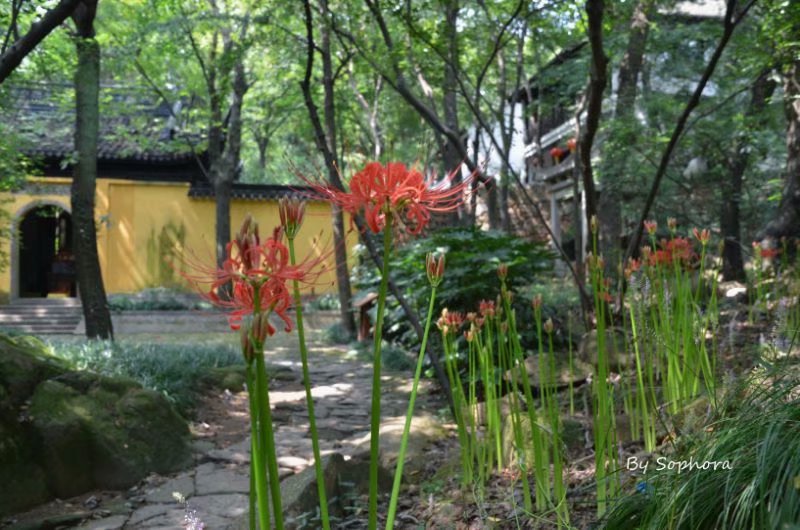 Lycoris radiata
Lycoris radiata
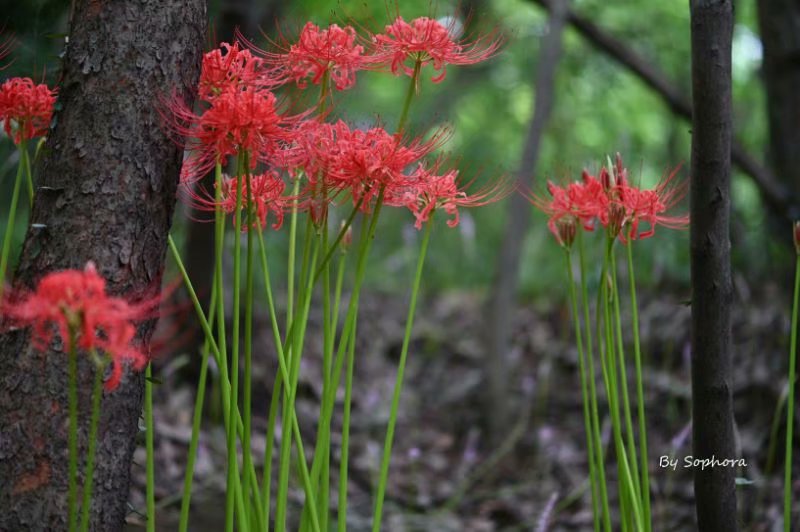 Lycoris radiata
Lycoris radiata
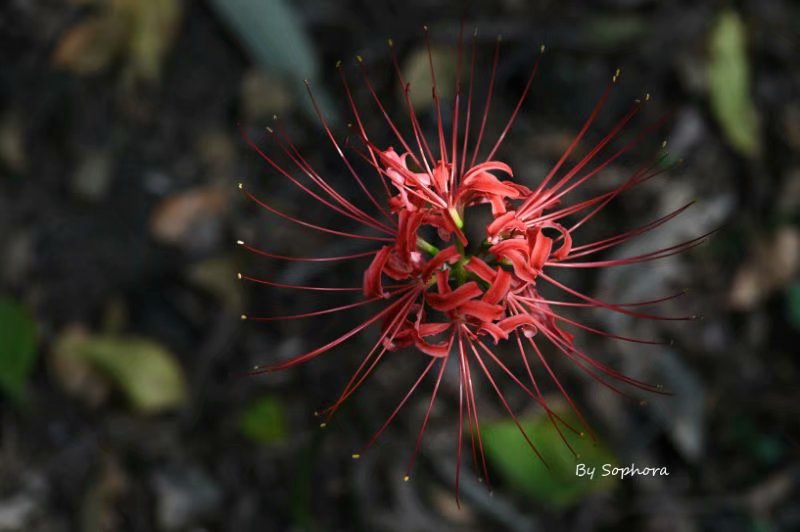 Lycoris radiata
Lycoris radiata
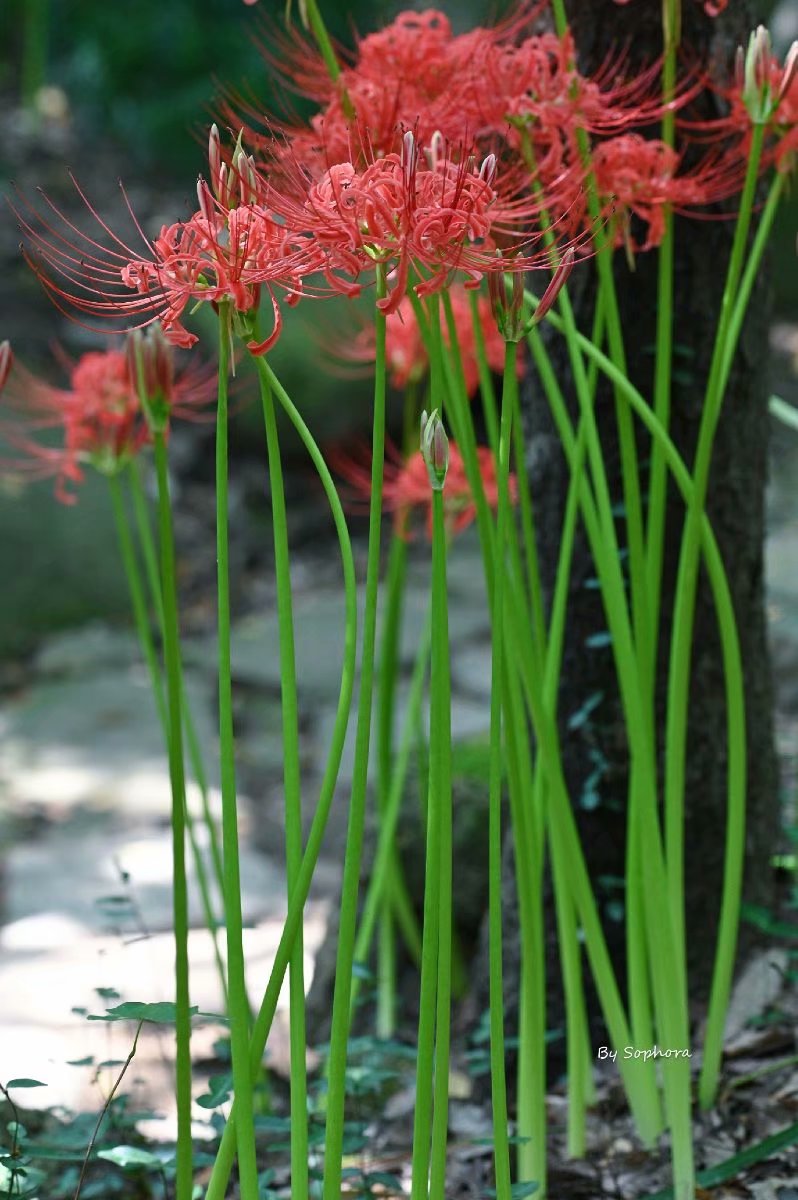 Lycoris radiata
Lycoris radiata
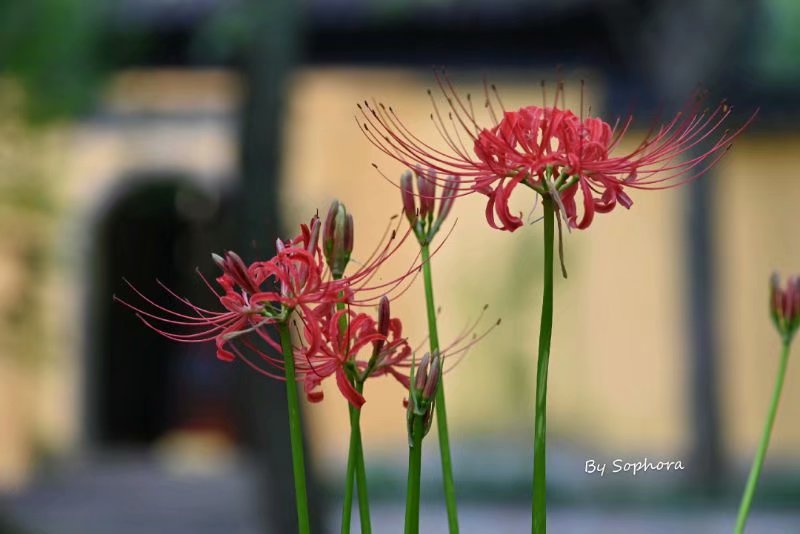 Lycoris radiata
Lycoris radiata
The four to seven large red flowers of Lycoris radiata in an umbrella shape, six petals crinkled and reversed, and the long filaments of the flowers are impressive. And the “see the flower but not the leaf, see the leaf but not the flower” characteristic gives it some religious connotation. The Japanese call this flower Higanbana because it blooms around the autumnal equinox, and the seventh day around the equinox is called the Higan day in Japan, hence the name Higanbana. Lycoris radiata is also known as Manjushala, which is said to be derived from the Buddhist scriptures and means red flower. According to a Japanese man, Ryu Zongmin, “The Four Seasons Have Flowers”, the flowers of Lycoris radiata came to Japan from China, and in Japan they only bloom without bearing seeds. Despite this, in recent years, the name of Higanbana has become more widely known in our country than “stone garlic”.
A special reminder is that Lycoris radiata is toxic. Reports of people dying after mistaking Lycoris radiata leaves for garlic leaves. It is said in the book “Saving the Wilderness” that it can be eaten because when there is nothing to satisfy the hunger, it can be eaten at your own risk after being treated by various means, which is what Li Shi Zhen called “save lifes”
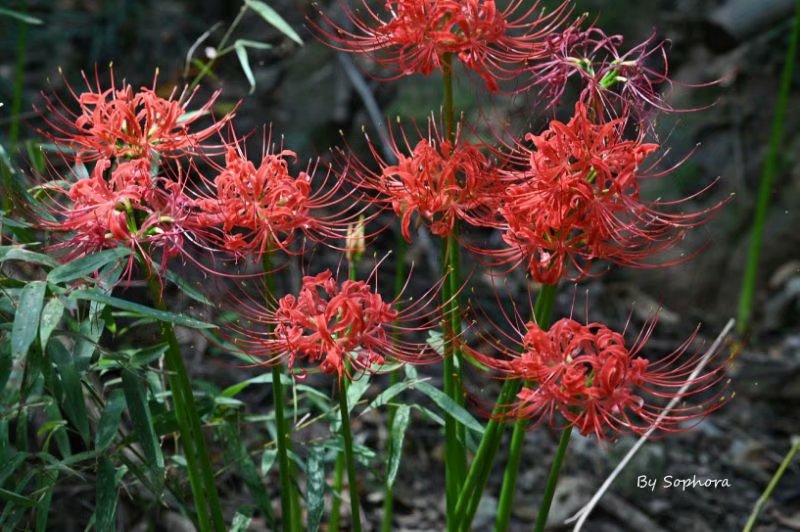 Lycoris radiata
Lycoris radiata
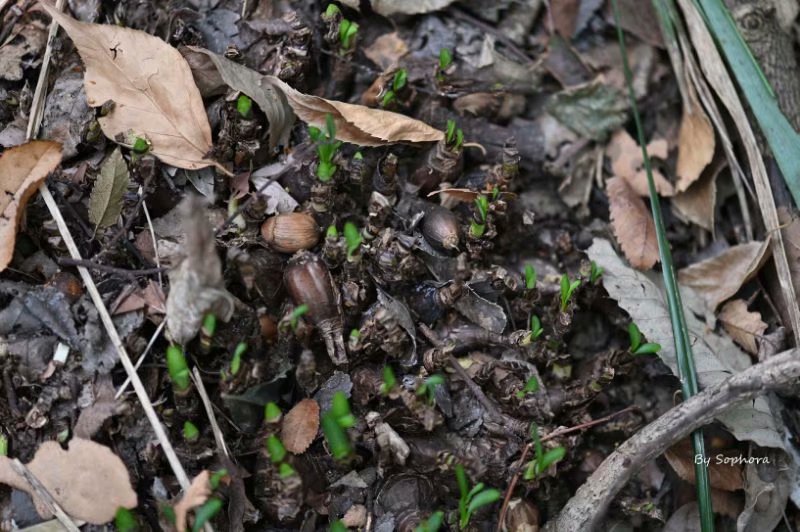 Lycoris radiatabulbs
Lycoris radiatabulbs
Next to Lycoris radiata outside Cuiyan Temple, Scilla scilloides (绵枣儿soft dates) is also blooming. The Lycoris flowers bloomed so vigorously that Scilla scilloides flowers bloomed quietly. In addition, there are also a number of Scilla scilloides in several stone crevices at the top of Hua Hill. It has an ovate bulb underground. Leaves emanate from the bulbs, but are soft and stick to the ground, very inconspicuous. The scape also emanates from the bulb and consists of dozens of small, thin, densely spaced flowers in an inflorescence. The flowers have six tiny petals that are purplish red, pink or white.
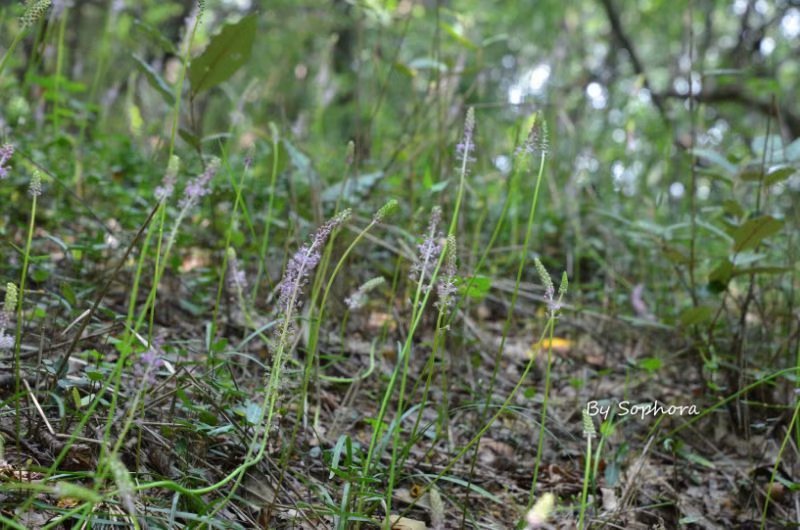 Scilla scilloides
Scilla scilloides
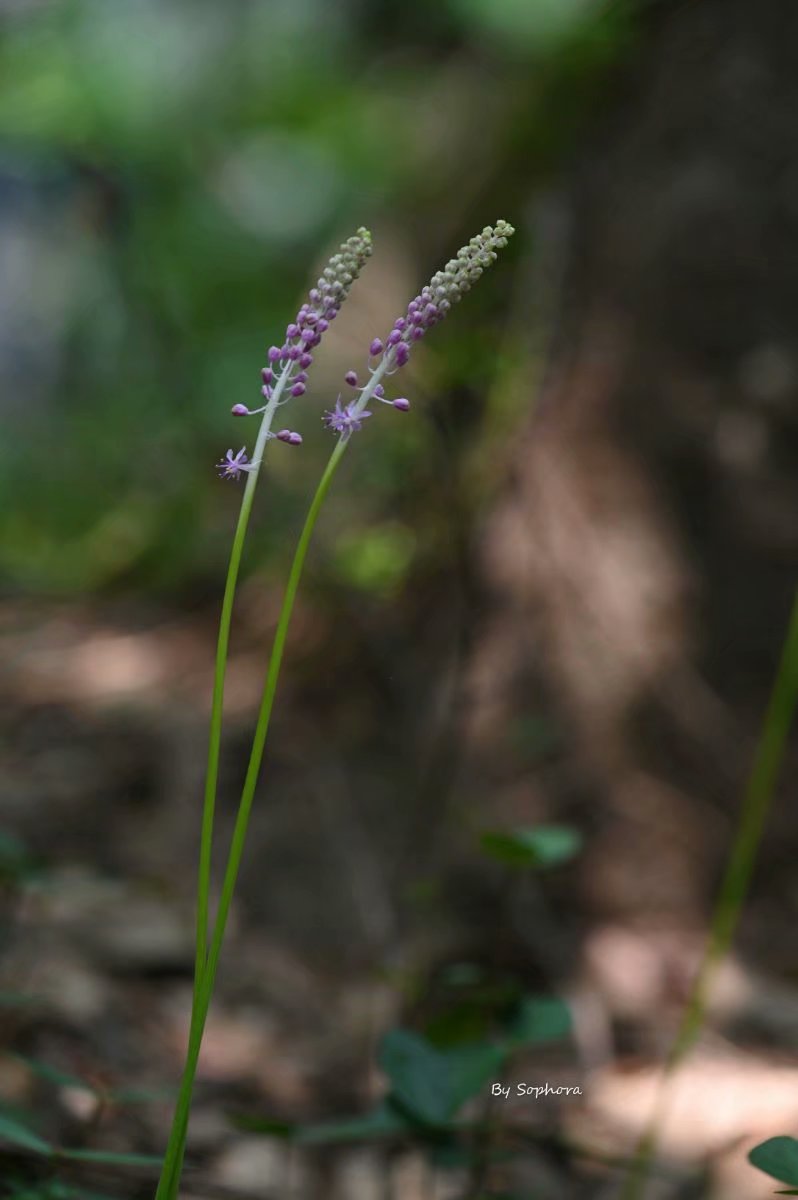 Scilla scilloides
Scilla scilloides
According to “Salvation of the Wild Materia Medica”, the root (that is, the bulb) of Scilla scilloides can be eaten, but it needs to be boiled for a long time and change the water many times, if “do not change the water to boil, after eating, the abdominal sound in gut, there is a down gas”. Now, people in some parts of northern China are still foraging. The name of “Soft date” is due to the fact that the bulbs are like dates, and when cooked, they are sticky and very soft.
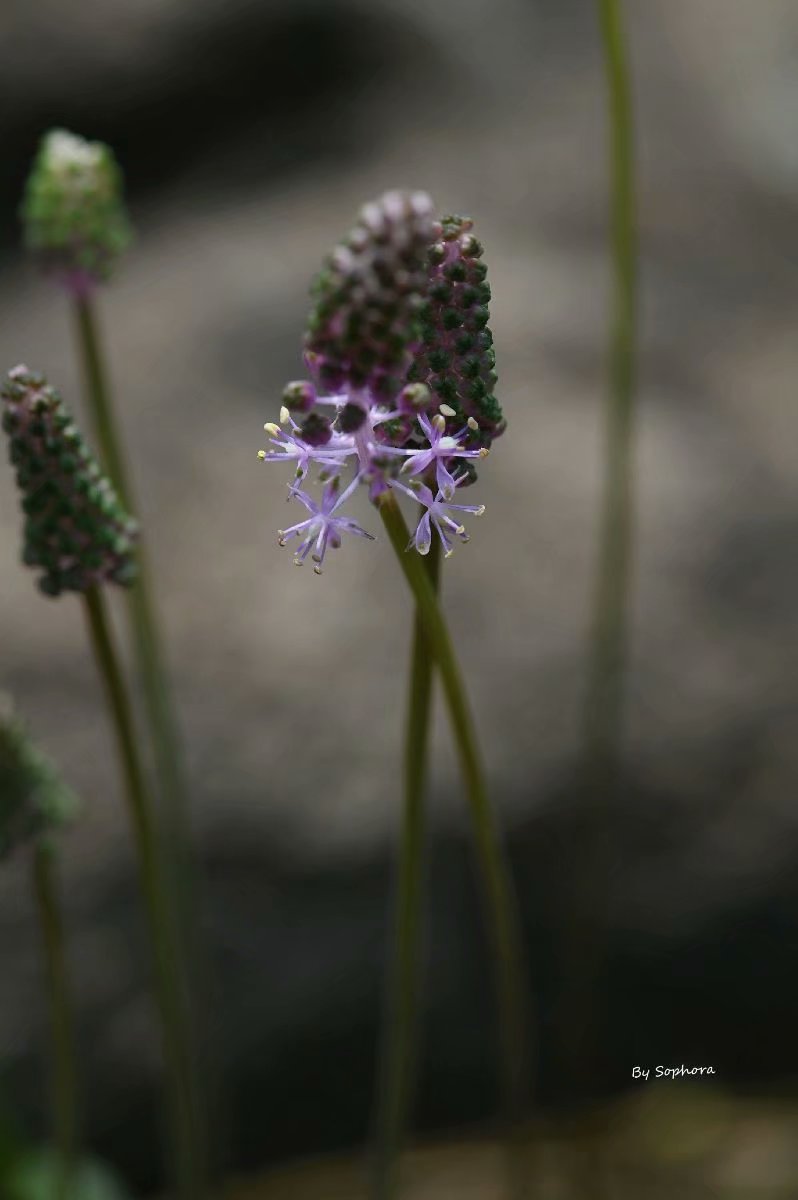 Scilla scilloides
Scilla scilloides